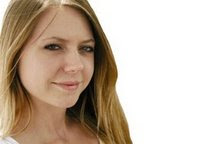I took the Oklahoma Visual Arts Coalition's self-guided Tulsa Art Studio Tour on Sunday and was, of course, so inspired by the creative spaces in which some of our local artists work.
First on my tour was a nondescript building at 1104 S. Voctor Ave. in which large-scale photographer David Varmecky works. It turns out, though you'd never know it, there are actually seven artists with studios in this building. Here's Varmecky's:
It turns out, though you'd never know it, there are actually seven artists with studios in this building. Here's Varmecky's: Varmecky finished his MFA at the University of Tulsa in 2005 and is looking for a teaching position at a university somewhere. He spends time working in his studio every day.
Varmecky finished his MFA at the University of Tulsa in 2005 and is looking for a teaching position at a university somewhere. He spends time working in his studio every day.
Although he wasn't on the itinerary, artist Steve Rosser, who's attending TU for his MFA in printmaking, opened his studio to folks on the tour. Rosser has painted professionally for 25 years and worked in art galleries for 20. While he earns his MFA, he continues to create and also teaches a class at TCC called Pro Practice, which instructs students on how to deal with galleries and other business aspects of art.
Rosser has painted professionally for 25 years and worked in art galleries for 20. While he earns his MFA, he continues to create and also teaches a class at TCC called Pro Practice, which instructs students on how to deal with galleries and other business aspects of art.
On the door to Rosser's studio was taped a Gustave Flaubert quote that I really liked: "Be regular and orderly in your life so that you can be violent and original in your work."
Next on my tour was Kristal Tomshany's studio, a small shed behind her Midtown home. Tomshany is a painter and mixed media artist whose studio was packed when I visited. Here, Tomshany is explaining the circumstances by which she found the bird that is the subject of the painting below. You can see the work in stages: a photograph of the bird, a sketch and then the finished product. Unfortunately, I came in on the story midway through and am unable to relate it to you here.
Here, Tomshany is explaining the circumstances by which she found the bird that is the subject of the painting below. You can see the work in stages: a photograph of the bird, a sketch and then the finished product. Unfortunately, I came in on the story midway through and am unable to relate it to you here.
As as aside, I thought this was cute:
Following that, I made my to photographer and installation artist Glenn Herbert Davis' studio at 3837 W. 21st St. I had plans to visit the studios of at least three more artists, but, unfortunately, on the way to Davis' studio my son fell asleep, cutting our trip short.
See?
Davis' studio looks less like an artist's habitat and more like a wood shop. He creates his installations from found soft wood, usually reclaimed from discarded packing palettes. His work is often functional, even if the function is a completely made up one, specific to that work.
His office furniture is almost all reclaimed, augmented and built by the artist. When he's finished with a work, he disassembles it and uses whatever he can salvage on other projects. He's also a professor at TU. Here, the artist and his muses:
When he's finished with a work, he disassembles it and uses whatever he can salvage on other projects. He's also a professor at TU. Here, the artist and his muses: (I made that part about the muses up. I have no idea if that's true or not.)
(I made that part about the muses up. I have no idea if that's true or not.)
I truly enjoyed my time with these artists and sincerely appreciate their willingness to open their studios up to the public for two days. I wish I could have seen all the studios. If you didn't visit at least one, you missed out. And while I wouldn't recommend knocking on any of these artists' doors just to see if you can pop in for a bit, I would urge you to take the tour next year. You will not leave uninspired.
4.06.2009
OVAC's Tulsa Art Studio Tour
Posted by Holly Wall at 10:57 PM
Labels: David Varmecky, Glenn Herbert Davis, Kristal Tomshany, Oklahoma Visual Arts Coalition, Steve Rosser, Tulsa Art Studio Tour
Subscribe to:
Post Comments (Atom)

0 comments:
Post a Comment